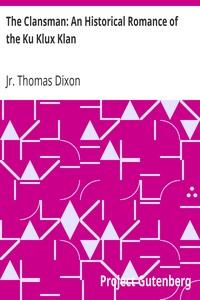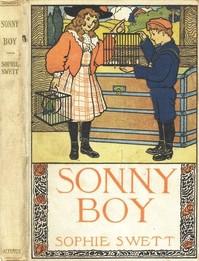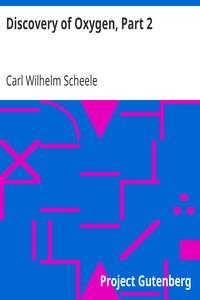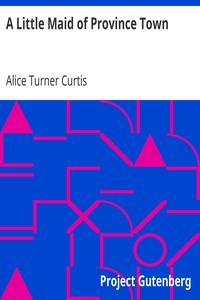Read this ebook for free! No credit card needed, absolutely nothing to pay.
Words: 11565 in 3 pages
This is an ebook sharing website. You can read the uploaded ebooks for free here. No credit cards needed, nothing to pay. If you want to own a digital copy of the ebook, or want to read offline with your favorite ebook-reader, then you can choose to buy and download the ebook.
+29.+ I took a glass retort which was capable of holding 8 ounces of water, and distilled fuming acid of nitre according to the usual method. In the beginning the acid went over red, then it became colourless, and finally all became red again; as soon as I perceived the latter, I took away the receiver and tied on a bladder, emptied of air, into which I poured some thick milk of lime in order to prevent the corrosion of the bladder. I then proceeded with the distillation. The bladder began to expand gradually. After this I permitted everything to cool, and tied up the bladder. Lastly I removed it from the neck of the retort. I filled a bottle, which contained 10 ounces of water, with this gas , I then placed a small lighted candle in it; scarcely had this been done when the candle began to burn with a large flame, whereby it gave out such a bright light that it was sufficient to dazzle the eyes. I mixed one part of this air with three parts of that kind of air in which fire would not burn; I had here an air which was like the ordinary air in every respect. Since this air is necessarily required for the origination of fire, and makes up about the third part of our common air, I shall call it after this, for the sake of shortness, Fire-air; but the other air which is not in the least serviceable for the fiery phenomenon, and makes up about two-thirds of our air, I shall designate after this with the name already known, of Vitiated Air.
+30.+ Anyone might ask me in what way I bring air from one vessel into another. I find it necessary therefore to describe this in the first place. My arrangements and vessels are the very simplest that one can possibly have: flasks, retorts, bottles, glasses, and ox bladders are the things which I employ. The bladders, while they are still fresh, are rubbed, and blown up very fully, then tightly tied and hung up to dry. When I wish to use such a bladder and find it blown up just as fully as at first, I am thereby assured that it is tight.
These are the methods which I employed in my investigations of air. I admit that they will not particularly please some, because they do not decide with great exactness. They afforded me satisfaction, however, in all my investigations; and people will often split a hair where it is not in the least necessary.
+31. Continuation of the Experiment mentioned in ? 29+ ...
Anyone might object and say that the air obtained according to ? 29 is perhaps nothing else than a dry acid of nitre converted into elastic vapours. But if this opinion had any foundation, this air should not only be corrosive, but should also produce nitre anew with alkalies. This, however, does not occur. Nevertheless, this objection would possess considerable weight were I not able to prove that several substances produce the same air as the acid of nitre does during distillation. But proof of this is not wanting.
I have proved in a treatise on manganese, which is to be found in the Transactions of the Royal Swedish Academy of Sciences for the year 1774, that this mineral is not soluble in any acid unless an inflammable substance be added, which communicates the phlogiston to the manganese, and by this means effects an entrance of the latter into the acids. I have shown in the same place that vitriolic acid, nevertheless, during a strong distillation with powdered manganese, unites with it and makes it soluble in water; and if this manganese is separated again from the vitriolic acid by means of precipitating agents, there are found in it the most distinct traces of the inflammable substance.... I had already observed a few years ago, that if in the calcination of manganese with oil of vitriol in an open crucible, some coal dust was driven by the current of air over the surface of this mixture, these fine coals took fire in the same instant with very great brilliancy. I accordingly made the following experiments.
+32. First Experiment.+--I mixed so much concentrated oil of vitriol with finely powdered manganese that it became a stiff magma. I distilled this mixture from a small retort on the open fire. In place of a receiver I made use of a bladder, empty of air, and, in order that the vapours which might pass over should not attack the bladder, I poured into it some milk of lime . As soon as the bottom of the retort became red hot, an air passed over which gradually expanded the bladder. This air had all the properties of a pure fire-air.
+33. Second Experiment.+--When I distilled two parts of finely pulverised manganese with one part of the phosphorous acid of urine in the same way as is indicated in the preceding paragraph, I likewise obtained fire-air.
It is thus seen constantly that the acid of nitre goes off again blood-red when separated by means of heat from the metals which had been dissolved in this menstruum.
I distilled mercurial nitre in the foregoing manner until the acid of nitre had separated from the residual red precipitate. In this case also I obtained our fire-air.... Whence comes the boiling of nitre, fused in a crucible and obscurely red-hot? Neither smoke nor vapours are seen to rise from it, and yet coal dust flying above the open crucible takes fire, burning brilliantly. Whence comes it that such nitre maintained in red-hot fusion in a glass retort for half an hour, becomes moist in open air and deliquesces after cooling, and still does not show any trace of alkali? What is the reason that this liquefied nitre permits its volatile acid to escape immediately, when rubbed or mixed with the vegetable acids?... If the chemists of the preceding century had thought worthy of a more particular examination, the elastic fluids resembling air which manifest themselves in so many operations, how advanced should we now be! They desired to see everything in corporeal form, and to collect everything as drops in the receiver. This is now for the first time better inquired into, and the air has begun to be carefully examined: and who is there who does not perceive the advantage which the results of such experiments carry with them?
+35. Fourth Experiment.+--I put an ounce of purified nitre into a glass retort for distillation and made use of a bladder, moistened and emptied of air, in place of a receiver . As soon as the nitre began to glow it also began to boil, and at the same time the bladder was expanded by the air that passed over. I proceeded with the distillation until the boiling in the retort ceased, and the nitre was about to force its way through the softened retort. I obtained in the bladder the pure fire-air which occupied the space of 50 ounces of water. This is the cheapest and best method of obtaining fire-air.
+38. Fifth Experiment.+--I took a silver solution prepared with acid of nitre, and precipitated it with alkali of tartar; I washed the precipitate thus obtained and dried it. I then placed this calx of silver in a small glass retort on the open fire for reduction, and fastened an empty bladder to the neck. The bladder was immediately expanded by the air which passed over. After the end of the distillation I found the calx of silver half melted together in the retort, with its metallic lustre; however, as I had effected the precipitation with alkali of tartar, and this is always united with a quantity of aerial acid which attaches itself to the calx of silver in the precipitation, so this acid was necessarily present also in the bladder. This acid was removed from it by milk of lime , and there remained behind one-half of pure fire-air.
Free books android app tbrJar TBR JAR Read Free books online gutenberg
More posts by @FreeBooks
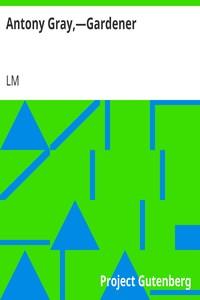

: The Clansman: An Historical Romance of the Ku Klux Klan by Dixon Thomas Jr - Historical fiction; Political fiction; South Carolina Fiction; Racism Fiction; Ku Klux Klan (19th century) Fiction; White supremacy movements Fiction; Reconstruction (U.S. history
